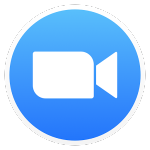Foundational Math V
Placement Information
Placement Process
One critical factor for restful learning is the proper placement of students. If you are unsure which level is the best fit for your student, reach out to the instructor you are considering. Once registered, anticipate contact regarding placement evaluations from instructors by May 15th and throughout the summer. Students must be registered to enter the placement process. Early placement exams may allow time for tutoring or additional review based on the outcomes. See more about placement evaluations in our Student-Parent Handbook.
Math Placement Process
For registered students, please anticipate contact regarding placement evaluations from instructors by May 15th and throughout the summer. Students must be registered in a math course to receive a placement assessment. Math classes have a detailed and specific placement process.
Read more about the math placement process here.
Watch the math placement process video with our department chair, Dr. Fransell Riley, here.
See the Math Scope and Sequence here.
Required Materials:
Books and supplies are not included in the purchase of the course.
There are four Singapore Math books for the year.
- Primary Mathematics Student Book 5A (Revised edition – 2022 Edition)
- Primary Mathematics Student Book 5B (Revised edition – 2022 Edition)
- Primary Math 2022 Additional Practice 5A
- Primary Math 2022 Additional Practice 5B
Other Resources:
- Digital tablet –Wacom Intuos, Huion, XP-Pen, or other. (or similar)
- Three-ring Binder
- Loose-leaf Filler Graph Paper
- Sharpened Pencils and Erasers
- Ruler with Customary and Metric Markings
- Personal Size Dry-erase Board with Markers
Additional manipulatives will be needed for certain lessons (post it notes, printable number lines, dice, beans, etc). The teacher will indicate these items ahead of time so students can be prepared.
**Recommended Resources: **
Part of the beauty of a Concrete-Pictorial-Abstract (C-P-A) approach to mathematics is giving students tactile experiences with math concepts. Please consider purchasing the following recommended manipulatives to support learning. These are not required. As much as possible, virtual and/or printable versions of these manipulatives will be made available.
- Blank Fraction Tiles: Amazon.com: hand2mind Plastic Rainbow Blank Fraction Tiles, Montessori Math Materials, Fraction Manipulatives, Unit Fraction, Fraction Bars Math Manipulatives, Fraction Games, Homeschool Supplies (Set of 51)
- Fraction Circles: https://www.singaporemath.com/products/rainbow-fraction-r-circles
- Place Value Discs, such as: https://www.singaporemath.com/products/7-value-decimals-to-whole-numbers-place-value-discs

Christina Royals began her journey as an educator in 2005 and holds a B.S in Middle Grades Education with certifications in ELA, Math, and Gifted as well as a Minor in Music. She has spent much of her career as a math instructor in a variety of instructional settings in Georgia. She is joining the Scholé Academy instructional team as a mathematics instructor and is excited to share her joy and passion for the content with young, eager learners. Christina feels it is a blessing and a “calling” to be allowed the opportunity to assist children with their academic progress. She enjoys showing even the most apprehensive students that math doesn’t have to be scary, and they CAN find success! When she isn’t engaged in math teaching, you can find her playing with her sprightly toddler, enjoying walks at parks, or reading in her hammock. She also loves crossword puzzles and math logic puzzles such as KenKen, Sudoku, and Suguru! (Expect to see those pop up during class sessions to challenge the students!) Christina was born, raised and continues to live in sunny Savannah, Georgia with her son and husband. Además, Christina habla español porque su marido es de la República Dominicana! [email protected]

Kate Weise has worked as a tutor, teacher, or school administrator since 2010 and has experience teaching multiple grade levels and across disciplines. She believes any student can fall in love with learning and loves helping them discover their unique giftings as God's image bearers. She holds degrees in History and Writing from Union University and an M.F.A. in Writing from Vermont College of Fine Arts. Most recently, she helped launch an urban, Classical Christian school where she worked primarily in curriculum development and academic support. Along the way, she developed a passion for math education that emphasizes building mathematical thinking and problem solving skills. She and her husband have three children that they are homeschooling together. [email protected]
Quarter 1
- Extend Place Value to Include Decimal Places
- Read, Write, Round, and Compare Decimals
- Adding and Subtracting Decimals
- Estimating Sums, Differences, Products, and Quotients of Decimals
- Multiply and Divide Multi-Digit Whole Numbers
- Understand Powers and Exponents
- Estimate Products of Multi-Digit Factors
- Multiply Decimals
- The order in which topics are presented may vary according to instructor and course section.
Quarter 2
- Dividing with Two Digit Divisors
- Dividing Decimals by Whole Numbers and Decimals
- Adding and Subtracting Fractions and Mixed Numbers
- Multiplying a Fraction by a Fraction
- Multiplying Mixed Numbers
- Dividing a Fraction by a Whole Number
- The order in which topics are presented may vary according to instructor and course section.
Quarter 3
- Understanding and Using the Coordinate Plane
- Writing, Interpreting, and Evaluating Numerical Expressions
- Identifying and Graphing Numerical Patterns
- The order in which topics are presented may vary according to instructor and course section.
Quarter 4
- Convert Customary and Metric Units
- Measurements on Line Plots
- Volume of 3D and Composite Figures
- Properties of and Classifying Quadrilaterals
- The order in which topics are presented may vary according to instructor and course section.
![]() Computer: You will
need a stable, reliable computer, running with a processor with a speed of 1 GHz or better
on one of the following operating systems: Mac OS X with Mac OS 10.7 or later; Windows 8,
7, Vista (with SP1 or later), or XP (with SP3 or later). We do not recommend using an
iPad or other tablet for joining classes. An inexpensive laptop or netbook would be much
better solutions, as they enable you to plug an Ethernet cable directly into your computer.
Please note that Chromebooks are allowed but not preferred, as they do not support certain
features of the Zoom video conference software such as breakout sessions and annotation,
which may be used by our teachers for class activities.
Computer: You will
need a stable, reliable computer, running with a processor with a speed of 1 GHz or better
on one of the following operating systems: Mac OS X with Mac OS 10.7 or later; Windows 8,
7, Vista (with SP1 or later), or XP (with SP3 or later). We do not recommend using an
iPad or other tablet for joining classes. An inexpensive laptop or netbook would be much
better solutions, as they enable you to plug an Ethernet cable directly into your computer.
Please note that Chromebooks are allowed but not preferred, as they do not support certain
features of the Zoom video conference software such as breakout sessions and annotation,
which may be used by our teachers for class activities.
![]() High-Speed Internet Connection:
You will also need access to high-speed Internet, preferably accessible via Ethernet
cable right into your computer. Using Wi-Fi may work, but will not guarantee you the optimal
use of your bandwidth. The faster your Internet, the better. We recommend using a connection
with a download/upload speed of 5/1 Mbps or better. You can test your Internet connection here.
High-Speed Internet Connection:
You will also need access to high-speed Internet, preferably accessible via Ethernet
cable right into your computer. Using Wi-Fi may work, but will not guarantee you the optimal
use of your bandwidth. The faster your Internet, the better. We recommend using a connection
with a download/upload speed of 5/1 Mbps or better. You can test your Internet connection here.
![]() Webcam: You may
use an external webcam or one that is built in to the computer. Webcam Recommendations:
Good (PC only) | Best (Mac and PC)
Webcam: You may
use an external webcam or one that is built in to the computer. Webcam Recommendations:
Good (PC only) | Best (Mac and PC)
![]() Headset: We recommend
using a headset rather than a built-in microphone and speakers. Using a headset reduces the
level of background noise heard by the entire class. Headset Recommendations: USB | 3.5mm
Headset: We recommend
using a headset rather than a built-in microphone and speakers. Using a headset reduces the
level of background noise heard by the entire class. Headset Recommendations: USB | 3.5mm
![]() Zoom: We use a web
conferencing software called Zoom for our classes, which enables students and teachers to
gather from around the globe face to face in real time. Zoom is free to download and easy
to use.
Zoom: We use a web
conferencing software called Zoom for our classes, which enables students and teachers to
gather from around the globe face to face in real time. Zoom is free to download and easy
to use.  To
download Zoom:
To
download Zoom:
- Visit zoom.us/download.
- Click to download the first option listed, Zoom Client for Meetings.
- Open and run the installer on your computer.
- In August, students will be provided with instructions and a link for joining their particular class.
![]() Scanner: In this
class, students frequently submit homework assignments by scanning pages from their workbooks.
Students and/or their parents should have easy access to a scanner and the ability to use it.
Scanner: In this
class, students frequently submit homework assignments by scanning pages from their workbooks.
Students and/or their parents should have easy access to a scanner and the ability to use it.
Step 1
Step 2
Step 3
Step 4
Explore our courses!
First, read the available course descriptions, noting prerequisites, target grades, and course objectives. If you think your student is prepared for the course, go ahead and register. After registration, a placement assessment may be provided to students, depending on the course and the student’s previous enrollment with Scholé Academy. Registration is finalized when the student’s placement assessment has been returned by the course instructor with placement confirmation.
All Courses | By Subject | By Grade
Read the Student-Parent Handbook.
Please take careful note of our teaching philosophy, our technology requirements, our school policies, the parent agreement, and the distinctions between our grade levels.
Double-check the course section dates and times.
Make sure they don't conflict with other activities in your schedule or other courses you are purchasing. Our system will not catch double-bookings!
You're ready to add course selections to your cart!
Our Assistant to the Principal will be in touch with you after your enrollment to help you with next steps, including any placement evaluations that may be required for your course selections.
This registration will be finalized when the student's placement assessment has been returned by the course instructor with placement confirmation.
